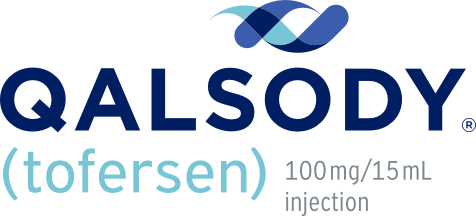Study design
VALOR was a phase 3, 28-week, randomized, double-blind, placebo-controlled clinical study in participants with weakness attributable to ALS and a SOD1 mutation confirmed by a central laboratory (N=108)1,2
VALOR baseline characteristics
- The prespecified primary analysis population (n=60, modified intent to treat [mITT]) had a slow vital capacity (SVC) ≥65% of predicted value and met prognostic enrichment criteria for rapid disease progression, defined based on their prerandomization ALSFRS-R decline slope and SOD1 mutation type1
- The non-mITT population (n=48) had an SVC ≥50% of predicted value and did not meet the enrichment criteria for rapid disease progression1
- Baseline disease characteristics in the overall ITT population (combined mITT and non-mITT population) were generally similar in patients treated with QALSODY and patients who received placebo, with slightly shorter time from symptom onset and higher plasma NfL at baseline in the QALSODY group1
- Concomitant riluzole and/or edaravone use was permitted for patients. At baseline, 62% of patients were taking riluzole, and 8% of patients were taking edaravone1
- Mean baseline ALSFRS-R score was 36.9 (5.9) in the QALSODY treatment group and 37.3 (5.8) in the placebo group1
- Median time from symptom onset was 49.5 weeks in the QALSODY arm and 63.4 weeks in the placebo arm1
- Mean age at study entry was 49.8 years (range: 23 to 78 years), and 57% of participants were male1
Primary endpoint
The primary endpoint was change from baseline to 28 weeks in the ALSFRS-R total score in the mITT population, analyzed using the joint rank test to account for mortality in conjunction with multiple imputation to account for missing data for withdrawals other than death.1
ALSFRS-R=Amyotrophic Lateral Sclerosis Functional Rating Scale–Revised; ITT=intent-to-treat.
At the end of VALOR, study participants had the option to enroll in the VALOR open-label extension (OLE)1
The interim VALOR OLE analysis at 52 weeks was designed to compare early- vs delayed-start QALSODY in the full ITT trial population.1
Adults aged 23 to 78 years (N=108) diagnosed with weakness attributable to ALS and a SOD1 mutation confirmed by a central laboratory were randomized 2:1 to receive treatment with either QALSODY 100 mg or placebo for 24 weeks (3 loading doses followed by 5 maintenance doses).1
The VALOR OLE is ongoing1
